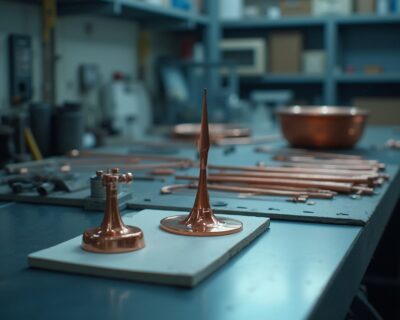Blog
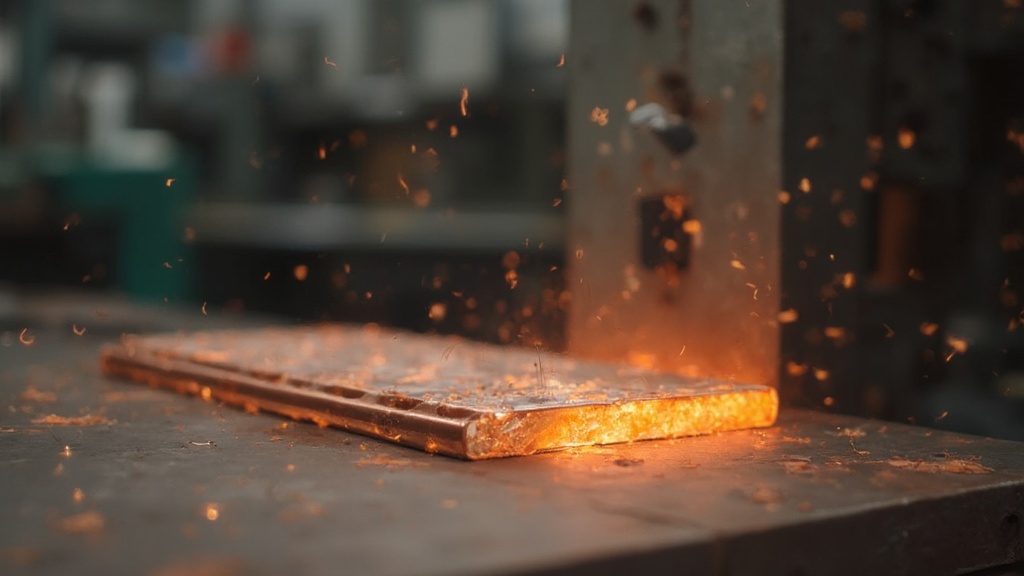
Understanding Copper Beryllium Material Properties: An In-Depth Tutorial
Introduction
In the realm of advanced materials, copper beryllium has emerged as a critical player, renowned for its exceptional mechanical strength and electrical conductivity. This sophisticated alloy, primarily composed of copper and beryllium, is tailored for a multitude of industrial applications, from aerospace to electronics.
As procurement managers navigate the complexities of sourcing materials, understanding the distinct classifications, properties, and safety considerations associated with copper beryllium becomes paramount. This article delves into the intricate composition and classifications of copper beryllium, its key physical and mechanical properties, and the diverse applications that underscore its importance in modern industries.
Additionally, it addresses the critical safety and toxicity considerations that must be managed to ensure worker protection, along with the pivotal heat treatment processes that optimize the alloy’s performance. By exploring these facets, procurement professionals can make informed decisions that align with both operational efficiency and safety standards.
Overview of Copper Beryllium: Composition and Classification
Copper beryllium is a sophisticated alloy primarily consisting of copper (Cu) and beryllium (Be), typically containing between 0.5% to 3% beryllium. This specific composition of copper beryllium material properties allows for a range of classifications based on distinct characteristics, including high strength and exceptional electrical conductivity. Among the most recognized grades are:
- C17200
- C17300
- C17500
Each grade is designed for specific uses such as electrical contacts and precision instruments.
For example, C17200 is preferred for its high strength and fatigue resistance, while C17300 excels in uses requiring superior conductivity. Notably, DOMADIA Beryllium Copper adheres to international standards such as UNS and ASTM, ensuring quality and reliability. The scale line length in micrographs is approximately 500 microns, which is a relevant technical detail for evaluating material properties.
Stephane Guignard observes, ‘The aerospace sector is presently highly energy-consuming,’ emphasizing the significance of alloy in energy-demanding uses. Furthermore, this alloy is employed in various sectors because of its non-sparking properties, especially in the oil and gas sector for items such as oil rig tools and mining apparatus. Recent blog entries, like those from May 16 and May 18, 2022, outline various uses of non-sparking alloys, highlighting their importance in safety-critical settings, including their deployment in dangerous areas where sparks might trigger explosions.
Understanding these classifications and their associated copper beryllium material properties is essential for procurement managers when selecting the most appropriate material for diverse industrial applications. The adaptability of this alloy guarantees its importance across various industries, from aerospace to telecommunications.
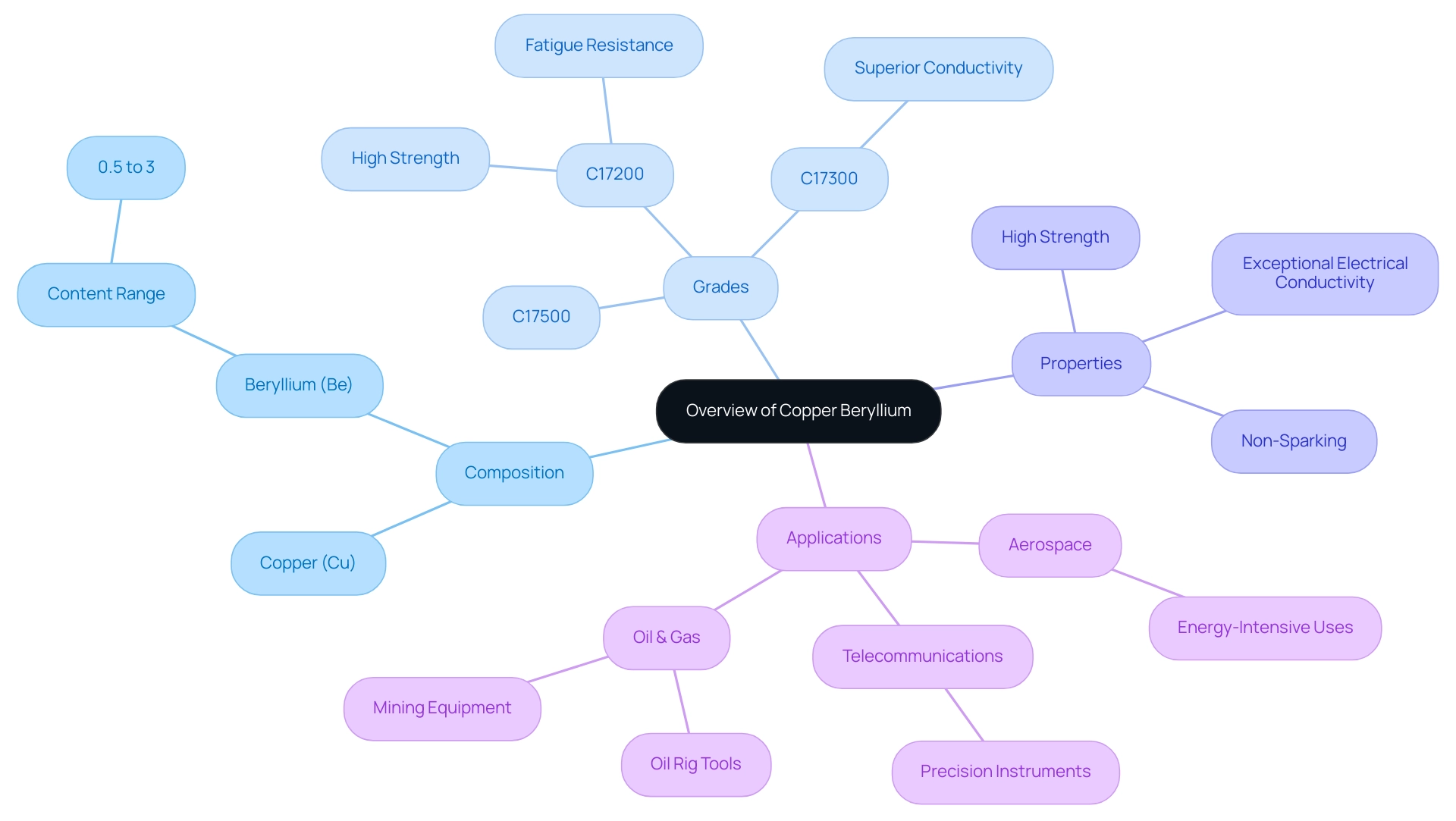
Key Physical and Mechanical Properties of Copper Beryllium
Copper alloy stands out in the realm of advanced materials due to its exceptional strength and conductivity characteristics. The tensile strength of copper beryllium material properties shows that mixtures typically range from 1,400 to 2,000 MPa, complemented by a hardness value of approximately 200 HV. These mechanical properties are vital for uses that demand reliability under stress.
Furthermore, the alloy boasts a thermal conductivity of around 100 W/m·K, which is pivotal for effective heat dissipation in demanding electrical applications. Significantly, this alloy maintains its mechanical integrity across a wide temperature range, with a liquidus temperature of 980°C, making it especially suitable for high-stress environments. Specialists in materials science have observed that this distinctive blend of characteristics enables a certain alloy to function exceptionally well even in demanding situations.
For example, recent studies on UNS C17200 highlight its robust mechanical characteristics, which include:
- A Rockwell hardness between 80.0 and 85.0
- A yield strength of 275 – 345 MPa
This durability emphasizes the alloy’s appropriateness for essential uses in sectors such as aerospace, where there is an urgent need to decarbonize energy-intensive processes, as pointed out by industry analyst Stephane Guignard. Moreover, Alloy 290 offers greater formability compared to Alloy 190, making it a cost-effective alternative for complex electrical connectors.
Significantly, the alloy also demonstrates outstanding resistance to corrosion, establishing it as a favored option in numerous industrial uses. At Domadia, our commitment to high-quality Beryllium Copper solutions, backed by innovative manufacturing and rigorous quality control, positions us as a leader in supplying these vital materials. By understanding the essential physical characteristics and mechanical performance of the alloy, as well as the corrosion resistance associated with copper beryllium material properties, procurement managers can make informed decisions that align with both performance requirements and cost-effectiveness in metal die casting.
Additionally, insights from the applications of copper nickel mixtures, such as their use in marine engineering and automotive systems, further illustrate the versatility and importance of high-performance materials in today’s industries.
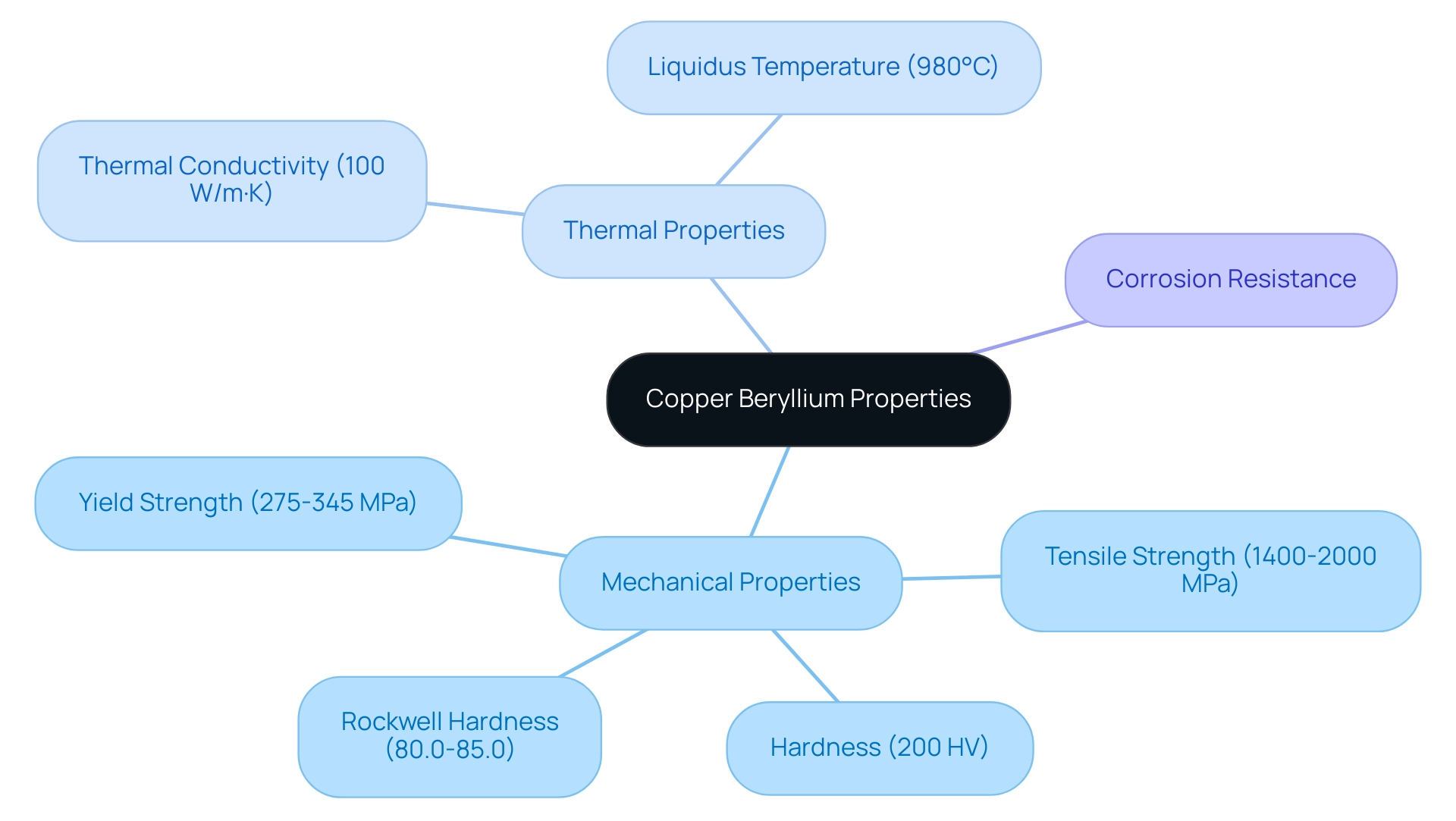
Applications of Copper Beryllium in Industry
The pivotal role of copper beryllium in the automotive and electronics sectors is increasingly recognized, primarily due to its exceptional copper beryllium material properties, which include remarkable electrical conductivity and mechanical strength. This alloy’s copper beryllium material properties make it commonly employed in manufacturing electrical connectors, switches, and relays, providing reliable performance in demanding environments. Notably, the aging temperature (Tag K) has a score of 0.19 for yield strength (MPa), underscoring its durability and performance under stress.
In the automotive industry, the applications of copper beryllium material properties extend to precision tools and components utilized in various high-stress situations, with its fatigue and wear resistance ensuring longevity and reliability. Moreover, in the field of industrial equipment, a specific alloy is preferred for its strength and durability against severe operational conditions, showcasing the copper beryllium material properties that make it an outstanding option alongside non-sparking tools in explosive settings to improve safety. For example, non-sparking tools made from copper alloys can be utilized in maintenance tasks in oil refineries or chemical facilities, where the danger of ignition from sparks is a major issue.
The exceptional thermal properties of copper beryllium material properties also make it a preferred choice for molds used in plastic injection, as it effectively maintains consistent temperatures throughout the molding process. As Congress has defined, the relationship between costs and benefits places the ‘benefit’ of worker health above all other considerations, making it essential for procurement managers to consider health implications when sourcing. The ongoing presence of this element in the lungs can lead to Chronic Beryllium Disease (CBD), characterized by granulomatous inflammation that may affect not only the lungs but potentially other organs as well.
By understanding these diverse applications and their implications, particularly the importance of integrating non-sparking tools in high-risk environments, procurement managers can refine their sourcing strategies to align with industry trends and market demands, ultimately driving enhanced operational efficiency.
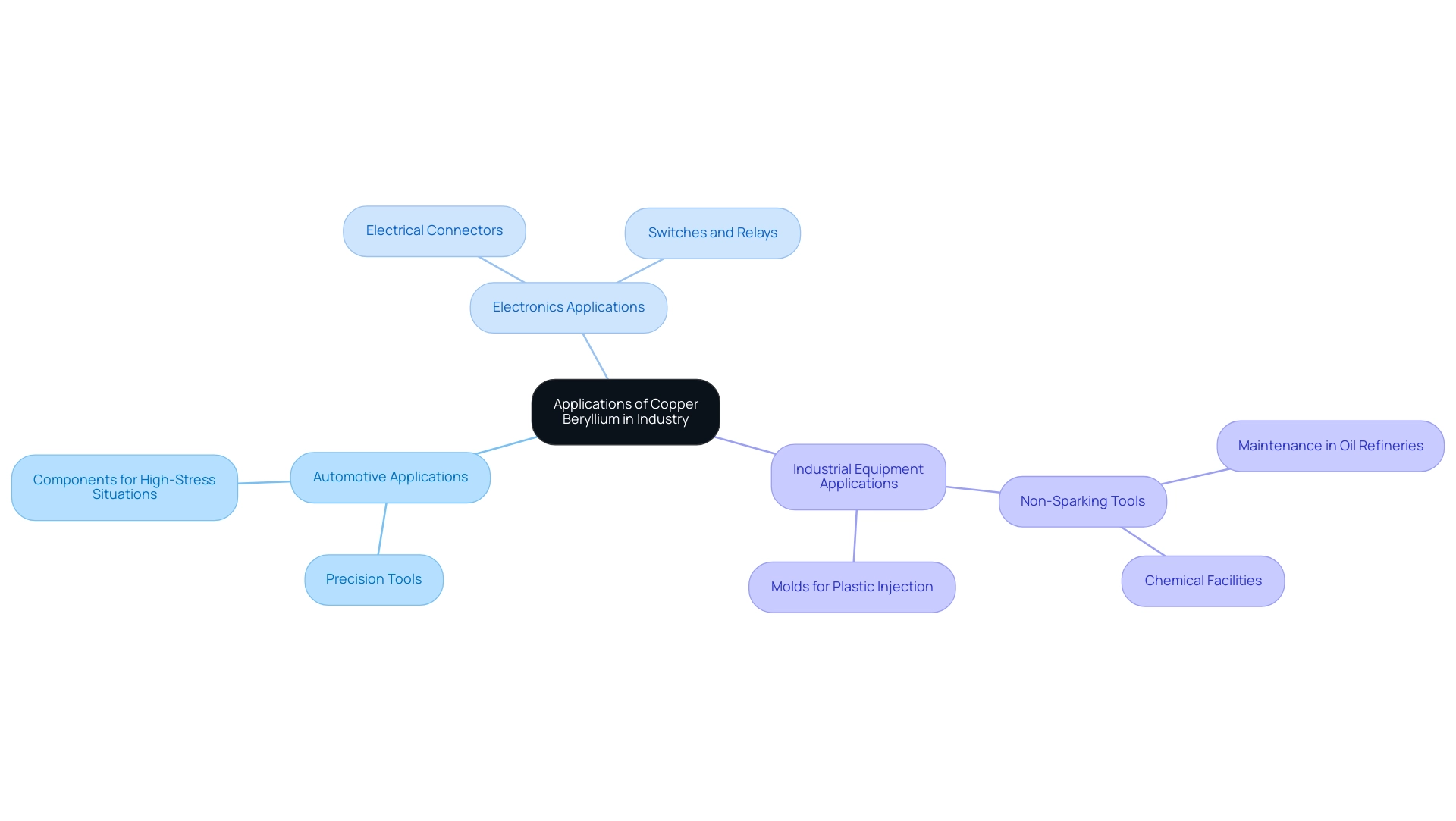
Safety and Toxicity Considerations of Copper Beryllium
The considerable health hazards posed by copper beryllium material properties are mainly due to its elements, which can result in chronic disease (CBD) when inhaled as dust or fumes. Recent statistics indicate that seven of the nine bone cancer deaths occurred in the soluble/mixed subcohort, underscoring the urgency of addressing exposure risks (SMR: 2.05; 95% CI: 0.82–4.21). To reduce these risks, it is essential for procurement managers to select high-quality materials like those provided by Domadia, recognized for their dedication to excellence and customer satisfaction.
We encourage you to contact us today to explore our extensive range of products and discover how we can support your project needs. The Air Force should consider standardizing testing procedures and developing a centralized surveillance database for research and program evaluation, which highlights the critical need for effective risk management. Compliance with stringent safety regulations is essential, and employers are strongly encouraged to implement appropriate personal protective equipment (PPE) during machining or processing of materials with copper beryllium material properties, as well as to conduct regular air quality assessments to ensure a safe working environment.
The significance of non-sparking tools in explosive settings cannot be overstated; these tools offer a dependable alternative for safety in high-risk scenarios. Moreover, these tools are not only non-sparking but also resistant to corrosion, long-lasting, and demonstrate outstanding thermal and electrical conductivity, making them perfect for a range of industrial uses. According to Paolo Boffetta, a prominent researcher at the Icahn School of Medicine at Mount Sinai, ‘We aimed at investigating mortality among workers exposed to the element and its compounds <.’
This emphasizes the need for ongoing training on safe handling practices. A recent case study on exposure monitoring activities revealed that the registry received data for 3,396 air monitoring samples from 734 workers in CY2021, with 91.1% of samples showing non-detectable results, illustrating the effectiveness of safety measures. Furthermore, results from BAWR analyses regarding personal exposure limits were shared with the Occupational Safety and Health Administration (OSHA), which used the data to evaluate lowering their permissible exposure limit to 0.2 µg/m.
Understanding these safety considerations is not only critical for protecting workers but also essential for minimizing legal liabilities associated with material handling in the workplace.
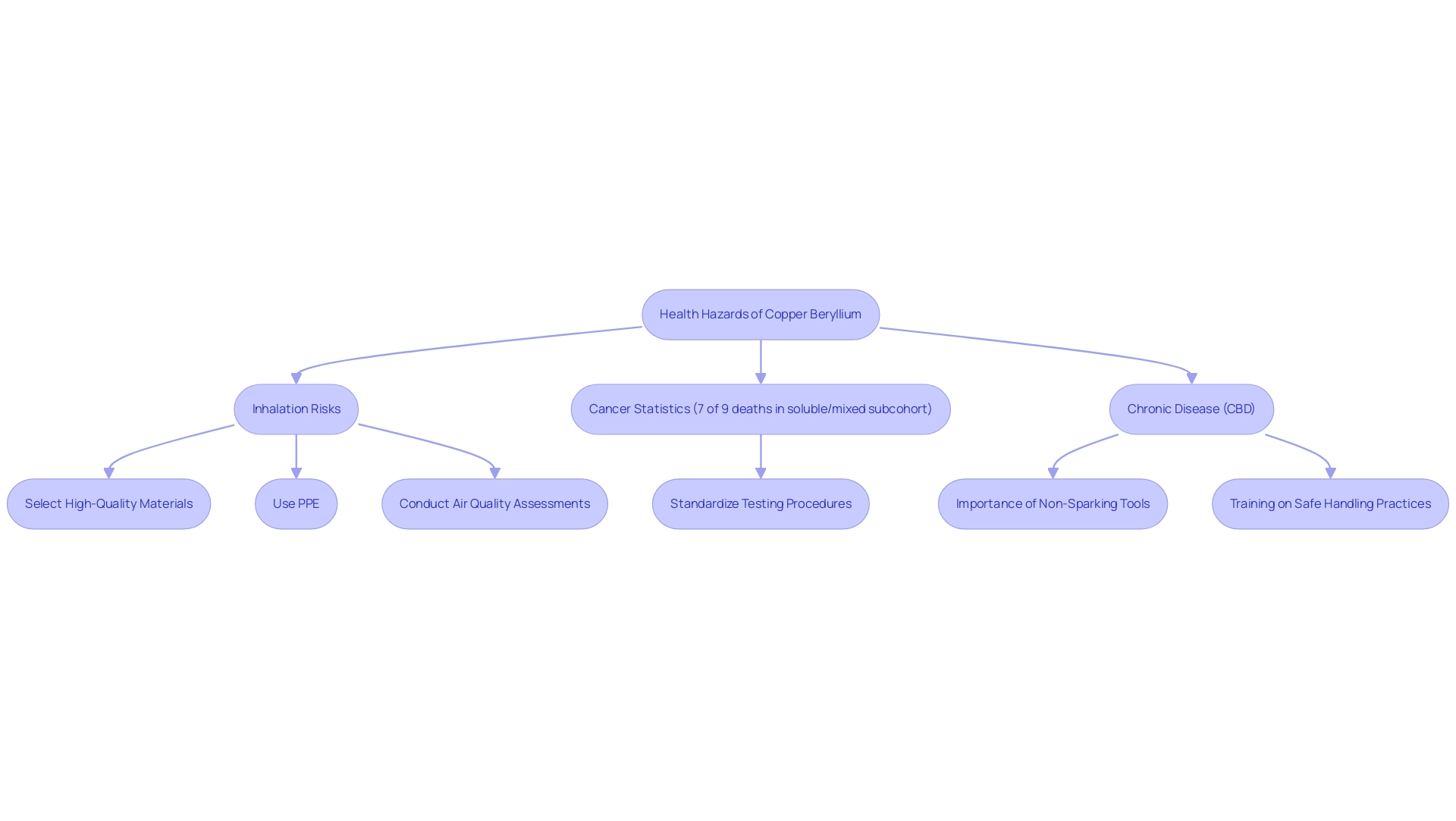
Heat Treatment Processes for Copper Beryllium
Heat treatment is a pivotal process for achieving the desired copper beryllium material properties in mixtures, particularly through age hardening. This method typically involves heating the mixture to a temperature ranging from 500°F to 700°F, with a common practice being 600°F for two to three hours, depending on whether the material is cold worked or annealed. This controlled heating process significantly enhances the material’s strength and hardness, making it ideal for high-performance applications.
Notably, the longitudinal elastic modulus of Gr/Cu is approximately three times that of copper, highlighting the superior mechanical properties of these materials. Furthermore, recent studies indicate that as aging temperature increases, the work hardening rate also rises, which leads to a decrease in the number of surface dimples and micropores, while increasing granular precipitates within the material. This relationship highlights the critical role of aging conditions in determining the copper beryllium material properties of high-strength materials.
Additionally, measurements of the coefficient of thermal expansion (CTE) and thermal conductivity performed on aged samples further illustrate the impact of heat treatment on material properties. Solution treatment followed by aging is another effective approach to tailor specific mechanical properties. Manufacturers must understand these heat treatment processes to effectively optimize the performance of copper beryllium material properties in their components.
As noted by Tiago Reis,
This work proposes a solution to increase abrasive wear resistance of copper‑beryllium alloy C17200 through an electroless nickel‑phosphorus (Nip) coating, illustrating the potential for advancements in heat treatment techniques that enhance the material’s durability and functionality.
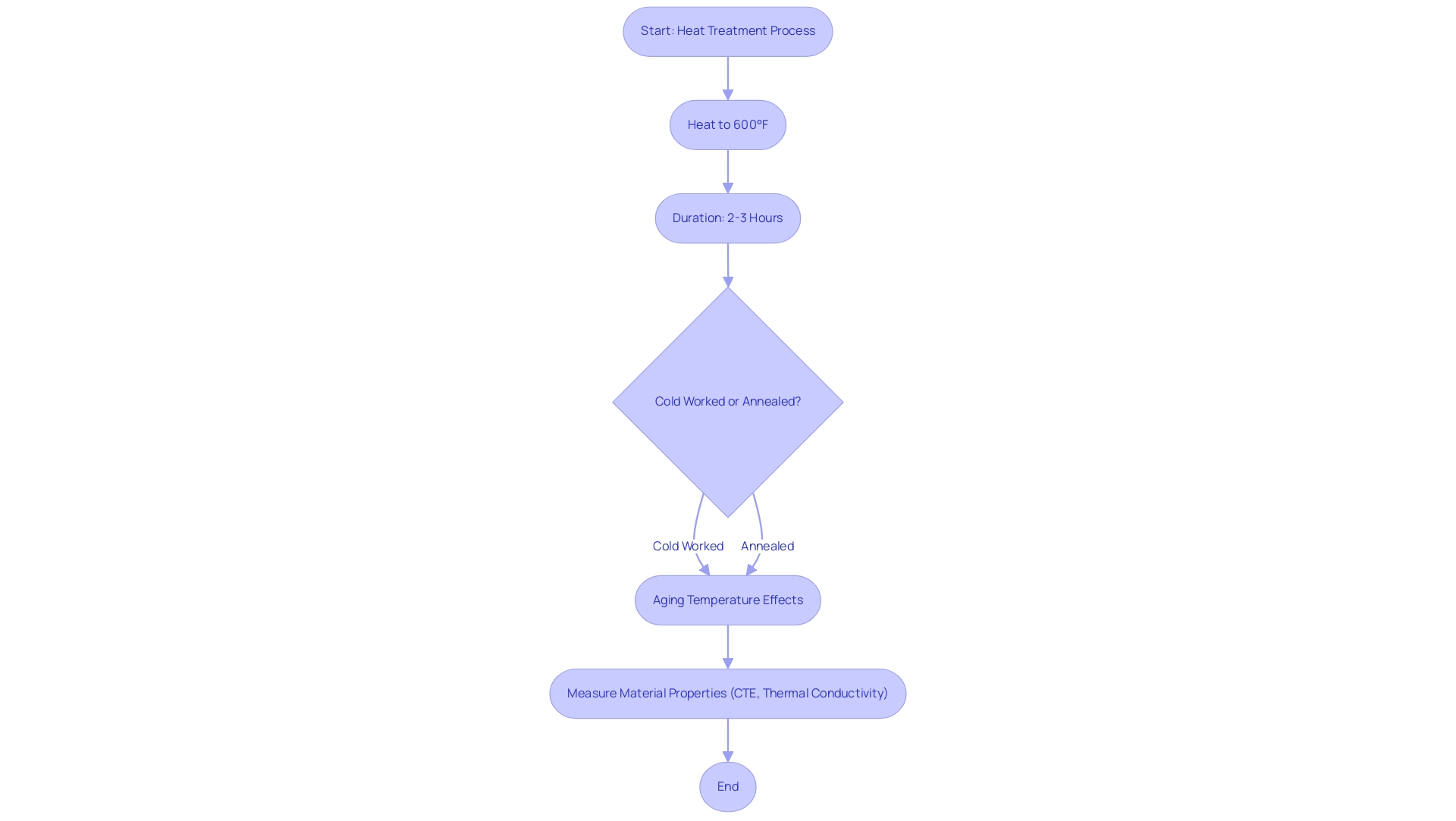
Conclusion
Understanding the multifaceted nature of copper beryllium is crucial for procurement managers aiming to optimize their material sourcing strategies. The article highlights the alloy’s intricate composition, showcasing how varying beryllium content leads to specific classifications that cater to diverse industrial needs. The exceptional mechanical and physical properties of copper beryllium, such as its tensile strength, thermal conductivity, and resistance to corrosion, make it a preferred choice across sectors ranging from aerospace to automotive.
Moreover, the discussion on safety and toxicity considerations underscores the importance of adhering to stringent safety protocols when handling this material. Awareness of chronic beryllium disease and the implementation of effective risk management strategies are essential to safeguard worker health. Additionally, the insights into heat treatment processes reveal how these methods are instrumental in enhancing the alloy’s performance, further solidifying its role as a vital material in high-stress applications.
In conclusion, copper beryllium stands as a cornerstone in advanced materials, combining remarkable properties with critical safety considerations. For procurement managers, leveraging this knowledge not only facilitates informed decision-making but also aligns operational practices with industry standards, ultimately driving efficiency and safety in their respective fields. As industries continue to evolve, the significance of copper beryllium will remain paramount, making it essential to remain abreast of advancements and best practices in its application and handling.


